 As the triathlon season comes to an end, so does Rachael’s tenure as a Trigirl ambassador. However, (lucky us!) she has offered to continue to blog for us from time-to-time, offering her advice as a personal trainer and triathlete.
As the triathlon season comes to an end, so does Rachael’s tenure as a Trigirl ambassador. However, (lucky us!) she has offered to continue to blog for us from time-to-time, offering her advice as a personal trainer and triathlete.
Big thanks to Rachael for her blogs thus far and congratulations on your season!
As the 2013 triathlon season draws to a close, it’s a time to reflect on our successes and the things that may not have gone exactly according to plan.
What’s your biggest triathlon fear?
 I’ll take a guess that it isn’t getting a puncture. That doesn’t really enter your head. I bet it isn’t getting stuck in your wetsuit or falling off your bike on a tight turn, either? I’m sure for most people the real fear of triathlon, certainly if – like me – it is your first season, or if – like me – you aren’t a strong swimmer, the fear is that open water swim. The cold water. The dirty water. The mass start. And the gnawing fear that you know isn’t really likely to happen, but might do (because said fear is beginning to consume you!) the fear of being last out of the lake. It’s a big one. And it happened to me this weekend.
I’ll take a guess that it isn’t getting a puncture. That doesn’t really enter your head. I bet it isn’t getting stuck in your wetsuit or falling off your bike on a tight turn, either? I’m sure for most people the real fear of triathlon, certainly if – like me – it is your first season, or if – like me – you aren’t a strong swimmer, the fear is that open water swim. The cold water. The dirty water. The mass start. And the gnawing fear that you know isn’t really likely to happen, but might do (because said fear is beginning to consume you!) the fear of being last out of the lake. It’s a big one. And it happened to me this weekend.
I’ve competed in two triathlons this (my first) season, the Eton Dorney SuperSprint and Blenheim Palace Sprint tri. Next week I’m competing in the Hever Castle Olympic distance tri. Slightly ambitious you might think? Very, I now realise.
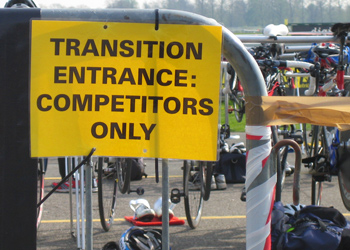 If you’ve registered for a triathlon, you probably know that you have to swim, bike, and run. But how do you manage to go from one to the other? What is this mystery known as triathlon transitions?
If you’ve registered for a triathlon, you probably know that you have to swim, bike, and run. But how do you manage to go from one to the other? What is this mystery known as triathlon transitions?
Transition isn’t difficult, but it is something worth learning about and practising. In our latest Trigirl article, we help to demystify transition to help you achieve an amazing and stress-free race!
Click here to read the full article.
 With the ITU World Triathlon Grand Final being held in London this week and the triathlon race calendar winding down, the 2013 triathlon season is sadly drawing to a close. That doesn’t mean that we’ll be forgetting about triathlon for the next few months – and you shouldn’t, either!
With the ITU World Triathlon Grand Final being held in London this week and the triathlon race calendar winding down, the 2013 triathlon season is sadly drawing to a close. That doesn’t mean that we’ll be forgetting about triathlon for the next few months – and you shouldn’t, either!
While we’re busily working away on our exciting new collection for 2014, it’s time for you to start thinking about 2014, too. Believe it or not, some of the more popular races are already selling out, so it might be worth considering your race schedule earlier rather than later!
If you’d like to race throughout the winter, there are plenty of runs, off-road races and triathlon alternatives out there. Check out the Tri247 events calendar for ideas and links. Also see our past articles on Autumn and Winter training for tips! And remember: there’s no bad weather, just bad gear, so as you think about layering up for the winter, be sure to pick up our cosy armwarmers and headscarves.
Finally, keep up with Trigirl over the colder months through our newsletter, which we will continue to send monthly, and of course, on Facebook and Twitter (and our online shop is open, no matter the weather!)
Enjoy your recovery and stay warm. Well done this season!
Food, Food, Glorious Food! – Nutrition for Triathlon
 As triathletes (whether you’re going for your first or fiftieth race) you will already be aware just how important nutrition is. Get it right and it can help you power to a PB. Get it wrong however, and you will probably hit the dreaded wall halfway through your training session.
As triathletes (whether you’re going for your first or fiftieth race) you will already be aware just how important nutrition is. Get it right and it can help you power to a PB. Get it wrong however, and you will probably hit the dreaded wall halfway through your training session.
I am a firm believer in real food for real people (though supplements do have their place). And one of the best things about training hard is that it can help move you towards a healthy, sustainable relationship with natural ingredients.
I wanted to share my top ten thoughts on nutrition for triathlon (and for life):
1. Fuel your body
The classic analogy is to compare your body to a car. Put in quality fuel and you will get a good performance over a long distance. Scrimping on fuel in terms of quality and quantity is a false economy – you will hit the wall and soon be running on empty.
 We’re adding another amazing Premium Package, designed to help you get everything you need to train and race, at a great price!
We’re adding another amazing Premium Package, designed to help you get everything you need to train and race, at a great price!
Trigirl’s latest Premium Package is our Shine Swim Package, complete with our high-tech Shine swimsuit, a Trigirl logo swim hat, Trigirl drawstring gym bag, and a 17-session swim training plan from British Triathlon Level 3 coach, Beate Vogt. The sessions are laminated for stay-dry poolside use. They are perfect for now or to provide inspiring workout sessions through the autumn and winter months!
Your swim training has just gotten a little easier (or at least your swim shopping has!)

Triathlon PB for Melanie C in Trigirl
This summer, Sporty Spice, Melanie C, has certainly lived up to her Spice Girls nickname!
Mel competed in both the Human Race Women’s Only Triathlon in June and the Virgin Active London Triathlon in July, and in both races she wore Trigirl Olympus trisuits! Not only that, but she proudly clocked her personal best time at the London race. In Mel’s own words via Twitter: ‘Beat my PB in my @TrigirlUK tri suit today. Thank you ladies xxx’
It’s great to know that our trisuits looked great and performed well – just like we promise!
We wish Mel success in her upcoming training for the Great North Run in September (she doesn’t rest!) and look forward to seeing her back in Trigirl when she starts training for her next triathlon.
Read Mel C’s race blog ‘Run, Sporty, Run!’ here.
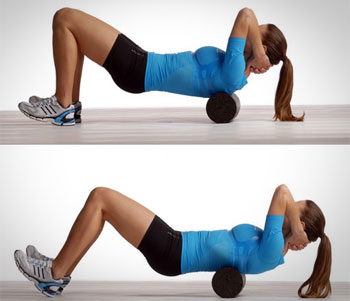
Bend me, shape me…
Triathon training. It’s all about swimming, cycling and running, right? Well yes…and no.
It’s so tempting to finish a tough training session and promptly collapse on the sofa (that’s not just me is it?). But what you do immediately after exercise could be the most important few minutes of all.
Arguably two of the best additional elements you can add to your training are stretching and foam rolling. They might not represent the most glamorous side of triathlon preparation but a few minutes a day will be a valuable investment of your time.
Stretching after Triathlon Training
There is an ongoing debate in the fitness industry about the benefits of stretching, but in my experience a few minutes of stretching at the end of a training session can save a couple of days of aching muscles!
What does it do?
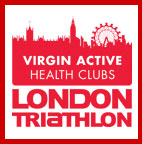 Trigirl will be hosting a stand at The Virgin Active London Triathlon EXPO, this weekend the 27th and 28th of July. The Expo is free to enter (even if you’re not racing) and will feature educational triathlon talks, swim technique analysis, expert nutritional advice… and Trigirl kit discounts only available at the Expo!
Trigirl will be hosting a stand at The Virgin Active London Triathlon EXPO, this weekend the 27th and 28th of July. The Expo is free to enter (even if you’re not racing) and will feature educational triathlon talks, swim technique analysis, expert nutritional advice… and Trigirl kit discounts only available at the Expo!
Come by for great discounts and the chance to win an exclusive Trigirl Premium Swim Package, including our high-tech Shine swimsuit, a Trigirl logo swim hat, Trigirl drawstring gym bag, and a swim training plan.
We hope to see you there!
Don’t Just Think, Do!
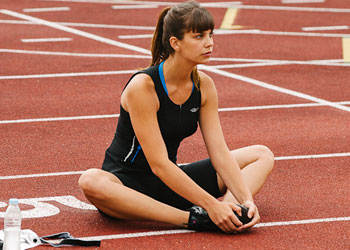 Good intentions. We all have them: to train more, to do our swimming drills, to make time to stretch, to avoid that piece of cake after a long ride… But between thinking and doing, it is all too easy for our good intentions to get lost in the maelstrom of daily life. If you aren’t feeling very motivated, any excuse is sufficient to let you stray off track: family, friends, work, Facebook, the local pub! And even the more dedicated exercisers sometimes just can’t face another run at the end of a long day.
Good intentions. We all have them: to train more, to do our swimming drills, to make time to stretch, to avoid that piece of cake after a long ride… But between thinking and doing, it is all too easy for our good intentions to get lost in the maelstrom of daily life. If you aren’t feeling very motivated, any excuse is sufficient to let you stray off track: family, friends, work, Facebook, the local pub! And even the more dedicated exercisers sometimes just can’t face another run at the end of a long day.
Here are some practical tips for triathlon training that can help you sidestep the obstacles that life throws at us, and stay on track to achieve your goals:
1. Planning is key
Sit down with your work and social diary and add in all your training sessions for the week ahead. Make training one of your key priorities, not just a ‘nice to do’ – remind yourself how good you feel when you’ve exercised, and how you’ll feel even better when you cross the finish line!
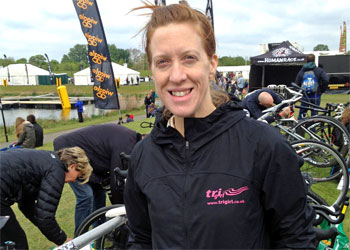 Husband and I, plus two friends, entered the 2013 Blenheim Palace Triathlon, for a dare. You may think this unremarkable; however I was a renowned couch potato and he hated running. We began to exercise, but as spring crept closer, we realised that we were going to have to practice doing a triathlon. Before the proper triathlon, if you see what I mean.
Husband and I, plus two friends, entered the 2013 Blenheim Palace Triathlon, for a dare. You may think this unremarkable; however I was a renowned couch potato and he hated running. We began to exercise, but as spring crept closer, we realised that we were going to have to practice doing a triathlon. Before the proper triathlon, if you see what I mean.
We entered the Human Race Super Sprint at Eton Dorney, simply to find out what it was going to be like. (And if I would drown in the lake). Olympic venue, too – exciting. Standing where the greats stood etc etc. That would be inspiring, I thought. Plus, I simply wasn’t prepared to panic or suffer overwhelm at Blenheim. To practice properly I decided that no parents or children were allowed; we (husband and I) just wanted to get a feel for it and see how it all worked.

We’re working on our 2014 Trigirl triathlon clothing line and we’d love to hear from you. What would you like to see new from Trigirl? Maybe something that you can’t find in the market that you’d love to wear or that other triathlon clothing companies just aren’t doing in quite the way that Trigirl can…
Send us your ideas, your wishes… if there is an idea that is perfect for Trigirl and we decide to produce it, you’ll receive your winning idea for free!!
We have tight deadlines to develop our amazing product, so we’ll have to give you a deadline, too (sorry!) – please email your idea(s) by 6th September 2013.
We can’t wait to hear what you’d like next from Trigirl and to unveil our fabulous 2014 collection!
 Sometimes even an experienced triathlete is confused by all of the training plan lingo.
Sometimes even an experienced triathlete is confused by all of the training plan lingo.
Don’t know your mesocycle from your build phase? Not sure what MHR or RPE means? Read our latest article here to get you up to speed (pun intended!)
 After your bicycle, buying a wetsuit is probably the most expensive item you’ll buy for triathlon. Click here for Trigirl’s advice on why you need a wetsuit, what to look for, and a some tips on how to know if your wetsuit is the right fit.
After your bicycle, buying a wetsuit is probably the most expensive item you’ll buy for triathlon. Click here for Trigirl’s advice on why you need a wetsuit, what to look for, and a some tips on how to know if your wetsuit is the right fit.
Though Trigirl ambassador Rachael Willis is a relative novice when it comes to triathlon, she’s no beginner when it comes to sport. A lifelong athlete and freelance personal trainer, Rachael shares here a bit about core strength. What is core strength, why it’s important to triathletes and how you can get it… without the dreaded sit-up!
Core strength for triathletes. Something we’ve all heard of and all the experts talk about it. But what exactly is it, how do we get it, and do we really need it?
Are we talking about a six-pack?
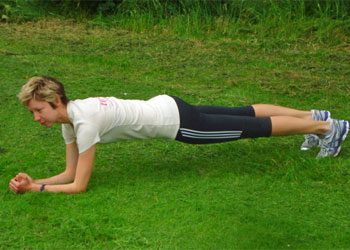
Well, not exactly. The ‘core’ consists of superficial and deep layers of muscles in the abdominal region, lumbar region (lower back), and thoracic and cervical region of the spine (mid and upper back).
So while the ‘six-pack’ may be the ultimate goal for many gym-goers, triathletes require much more from their training if they are to benefit from effective core strength.